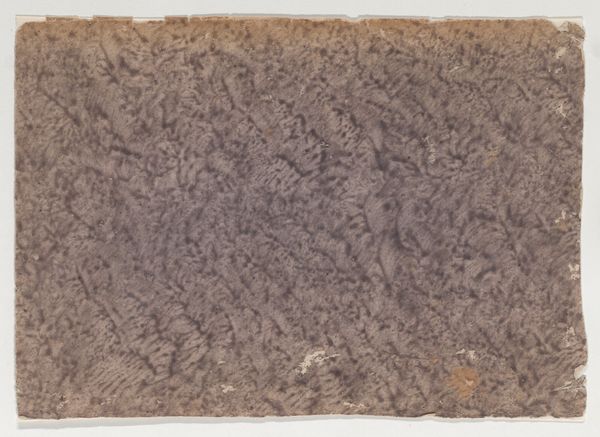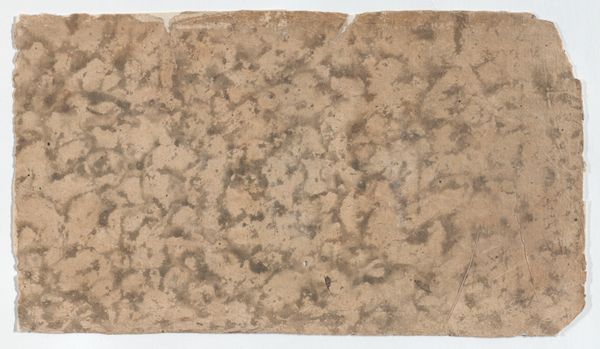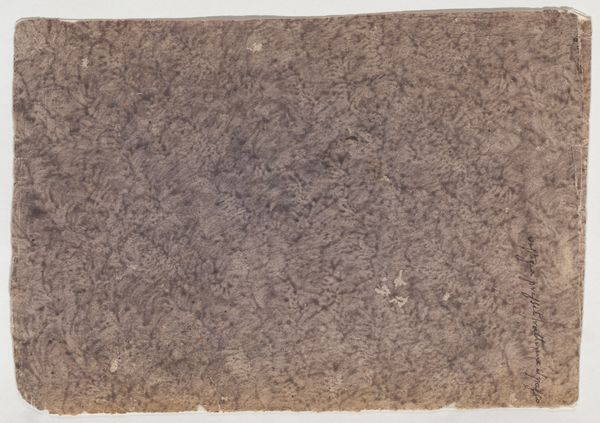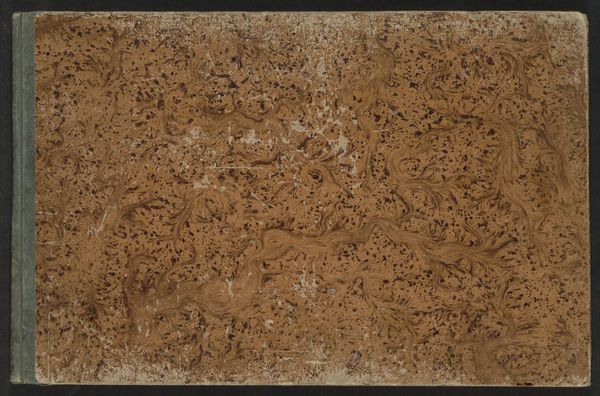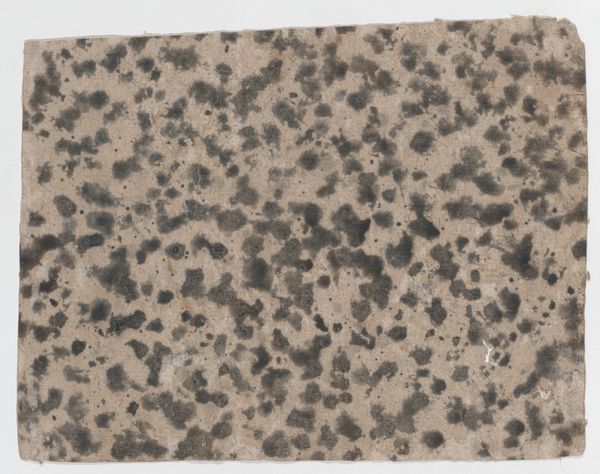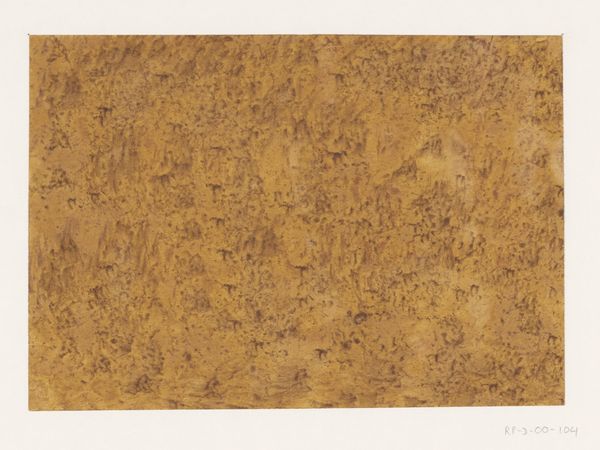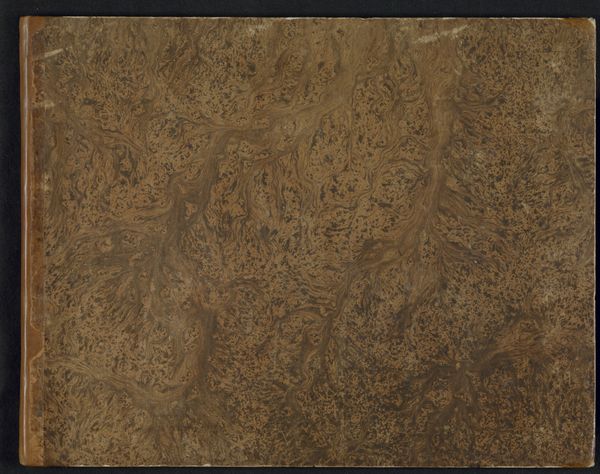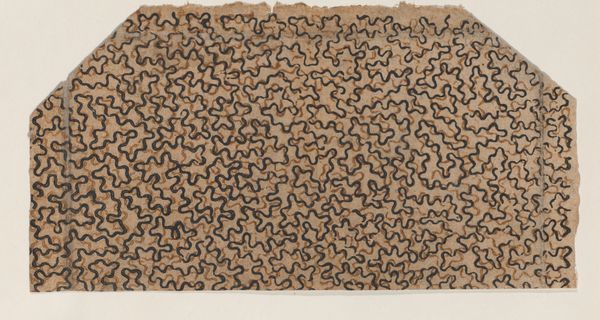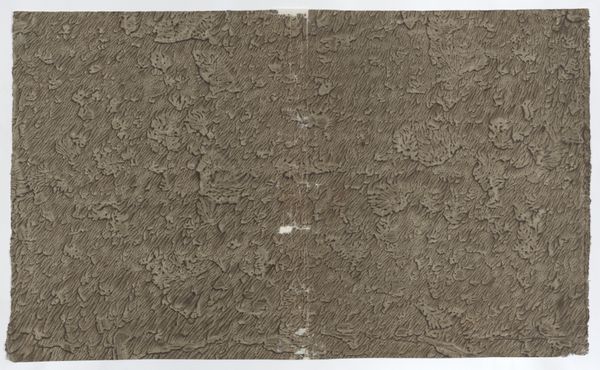
drawing, print, paper, graphite
#
drawing
#
organic
# print
#
paper
#
organic pattern
#
graphite
#
organic texture
Dimensions: Sheet: 4 3/4 × 7 1/8 in. (12 × 18.1 cm)
Copyright: Public Domain
Curator: Oh, this makes me think of tide pools, all those hidden worlds in shades of murky beauty. Editor: That's a great association. What we have here is "Sheet with overall splotchy pattern," a drawing, graphite and print on paper, created sometime between 1800 and 1900 by an anonymous artist, and held in the collection of the Metropolitan Museum of Art. For me, context is everything. Given the period, this reminds me of experimental processes around printing. We might be seeing a very early attempt at creating marbled paper, for example. Curator: Interesting! I hadn't considered it from that point of view at all, I was really responding to the mood. It makes me feel like the edge of something—an ecosystem, or a state of mind. The shapes could be read as maps, or inkblots. What do you make of the organic shapes in terms of patterns and society? Editor: Pattern and society...that's juicy. Thinking about class and production, you know? Marbling was used for endpapers and decorative book elements, signaling a level of affluence. This sheet, with its rough edges, doesn’t read like a finished product. Is it a rejected sample? Is this a commentary on luxury? Was the artist someone on the margins, experimenting with the aesthetics of the elite? And, crucially, who was it made for, at a time when production for private use was changing rapidly due to nascent industrial practices. Curator: Ah, the questions just bloom out of it, don't they? I love that tension, and how it invites us to think of it as not only something beautiful, but something imbued with all that human drama. This particular moment in time feels caught on the sheet somehow. Editor: Precisely. It asks us to reconsider the definition of the complete product, but I think it really shows us how beauty and art always are linked, not always by perfect forms, but by process, time, context. That even scraps carry a weight of social dynamics in visual culture and lived experience. Curator: Right, well, scraps or treasure...I suppose that's always up to how you look at them! Editor: Indeed. Thanks for those thoughts, I'll think on that a while.
Comments
No comments
Be the first to comment and join the conversation on the ultimate creative platform.
